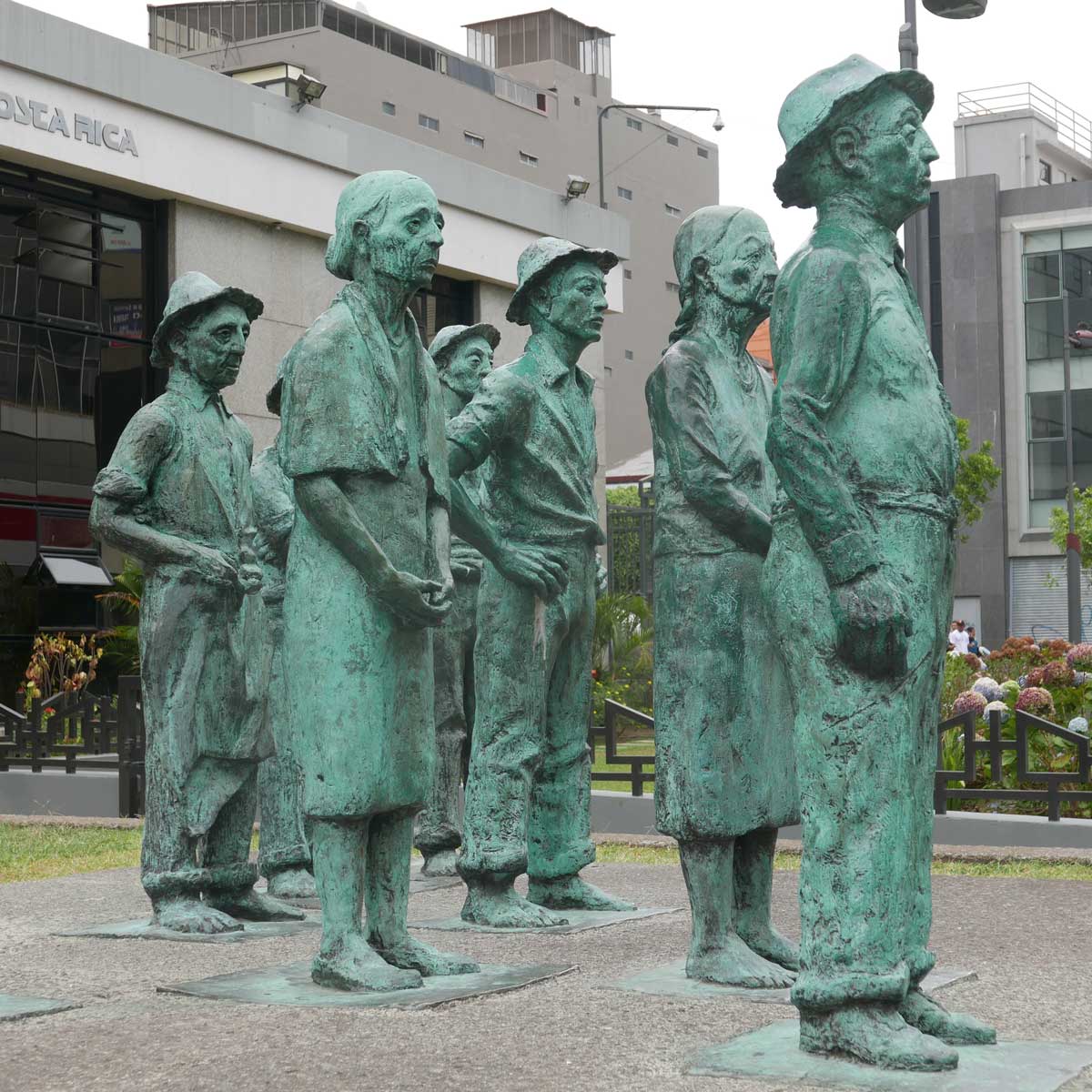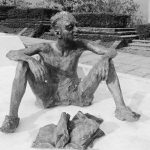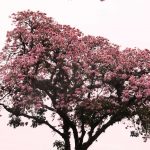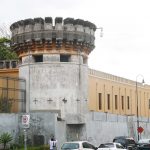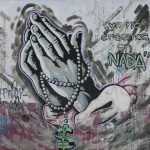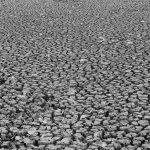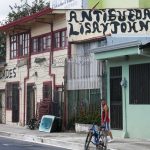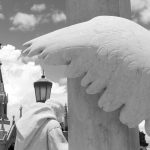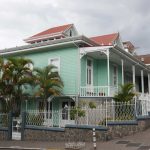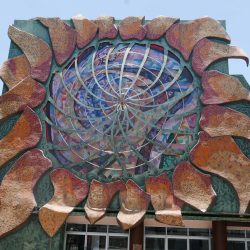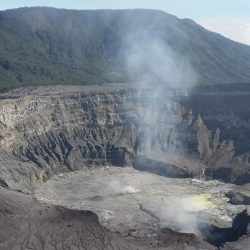Yes, one of those Central American capitals usually avoid. In contrast to some other cities (did anyone say Guatemala City?), San Jose is actually pretty safe. And it has some good urban vibes, full of nightlife, street art and street culture.
There was this great saturday afternoon where dozens of kids were taking over the benches of the Plaza de la Democracia, in front of the National History Museum. Two kids started the human beatbox, and other trying-to-be-cool guys joined in to do some freestyle rap.
That says a lot of the vibe of San Jose. Street art is huge. And the shops in the city center might not be nice, but they make the city feel lively. Add to that some areas that are slowly improving, and you can see why a two to three day stay should be mandatory.
CONTENTS
- General introduction
- Food and drinks
- Activities / Things to do
- Getting there and getting around
- Miscellaneous
General introduction
San Jose is located quite in the geographical heart of the country as well. Surrounded by a small mountain range, it actually looks quite nice in the evening when you see some neighborhoods slope up the side of the hills.
As said, when the sunlight is turned on, it turns out the Costa Rican capital isn’t that pretty after all. But it has a style of its own, a mix of colonial buildings, great parks, brutalism and some derelict buildings, mixed right into the city center.
Food and drinks
Plenty of nightlife, to start with that. There are several clubs in the center. One of the better party areas though is in the east, in the Calle de la Amargura / Calle 61 in the San Pedro area, close to the UCR /University of Costa Rica).
Obviously, plenty of food to find there as well. If you walk a bit to the west, to Los Yoses, you will first find a big shopping mall (also called San Pedro). Especially in Calle 33 you will find a string of good restaurants, and more if you dare to explore the surrounding areas. A special mention goes out to Mercado Escalante, a partially open air bar surrounded with containers, which is so hip even Berlin hipster wouldn’t miss their hometown here.
More towards the center are a lot of options around the National History Museum as well. Especially along Avenida 2 (or the main shopping street of Avenida Central) there are options for every possible budget.
And then one more thing… a guilty pleasure. Near (or maybe even in) the Barrio Amon is the abso-fantas-delicious Cafe Miel Garage (https://www.cafemielgarage.com/). They make ridiculously lavish, unhealthy coffee variations with at least equally unhealty cakes and other sweets. Heart-clogging, but a feast for the senses. In that area, especially along Calle 15 one street further eastwards, are many more options, amongst them the expat favorite Cafe de los Deseos.
Activities / things to do
- National History Museum: though history museums usually aren’t my thing, this one is actually a pleasant exception. Located inside a fortress, it has a consie and well-organized exhibition (once you made it through the unique botanical garden cum entrance). In 1-2 hours you will learn the most important facts about Costa Rican history and discover that it hasn’t always been this peaceful. There are good temporary exhibitions as well
- MADC: the contemporary art museum is a treat. Located inside a former factory, it isn’t extremely huge, but has some pretty daring displays. When I was there, they had some very small paintings with cuddly animals… cheekily having sex. Very funny indeed. The nearby Cultural Center (within the same complex) sometimes has music and theatre performances outdoor
- Jade Museum: this one is new, in a beautiful dark green building opposite the National History Museum. It is a bit more expensive but explains nicely the history of jade and the role in society
- Park La Sabana: the city’s biggest park is on the western part of town. It is great for a stroll and to get a feeling for the Costa Rican way of life (La Pura Vida, yes…). The National Stadium is there as well (there are concerts there sometimes)
- Cementerio General & Cementerio Obrero: these adjacent cemeteries can best be visited together with the Park La Sabana, as they are pretty close. These cemeteries, especially the Cemeterio General on the eastern side of the premises, contain beautiful white sculptures
- for the rare chance you might want tom see some Bundesliga, Premier League, Primera Division or Serie A football action from Europe (I did): the Tropical Sport Bar & Restaurant (corner of Avenida 1 / Calle 7, south of Park Morazan, 1st floor) is your place. On ground level is a questionable gambling hall, but upstairs it is nice and modern and you can see your favorite team loose!
- Street art: is literally everywhere in this city. But as you pay me for glopriously accurate tips, in the streets east of the Natural History Museum you can find some good examples. Not too far away, on Avenida 7 west of the Antigua Aduana building, is another great stretch. And the best location is immediately south of the UCR (University of Costa Rica)
- neighborhoods:
- Barrio Amon: close to the city’s heart, this colonial part of town has recently been upgraded and has become much more lively. No major museums, just nice to walk around and eat/drink
- slowly taking you eastwards, you will find the nicely restores Antigua Aduana building. This has a theatre (and is the heart of the film festival). The Cine Magaly is really close as well. This building is the entrance to the Mercado Escalante area, which leads to a hipster place consisting of containers that form the core for great open-air bars and restaurants. Just follow the railway line east
- Los Yoses: if you keep following the railway line, beyond Mercado Escalante container village the Los Yoses area starts. This feels like a leafy suburb almost, with nice colonial houses and some seriously funky restaurants. There is the Costa Rican/North-American cultural center as well (https://www.centrocultural.cr/wordpress/), which has a small theatre as well
- San Pedro: yes, following the railway even further (beyond the shopping mall and the Paseo de la Segunda Republica highway) you get into San Pedro. This is where the university is, and a party street full of vibrant bars
Getting to San Jose and getting around
- Almost all tourists will come with a luxury bus from another country (or within Costa Rica). The bus terminals are spread around the city
- If you arrive by plane, actually you will land in the Alajuela suburb. If you want to fly out again, that is a good place to stay the night before. San Jose is not too far away though, buses or taxis take you there in 20-30 minutes
- The city actually has a small train system, which isn’t necessarily very convenient, but at least it’s an option. Within the city center you can actually walk almost everywhere, although La Sabana park is a decent journey. Otherwise taxis or local buses are your best options, both are generally safe
Miscellaneous
- Weather: San Jose follows the classic pattern of the rainy season. It starts around May and will die down in November, which is quite a long wet season for Central America. Dry season though really means no rain, so when I visited the capital for instance authorities had trouble providing enough water. There was even a schedule where the entire city center was closed off the water grid daily between noon and 8pm…
- Safety: generally San Jose is pretty safe, especially during daylight. The city center can feel a bit dodgy after 8pm, when most shops there close. And if you want to enjoy the vibrant nightlife, it’s better to come and go by taxi, especially in the southern half of the city center. Other areas, especially Los Yoses and San Pedro, have a much more relaxed feel though, even at night
There is a separate article with more photos of San Jose, Costa Rica
